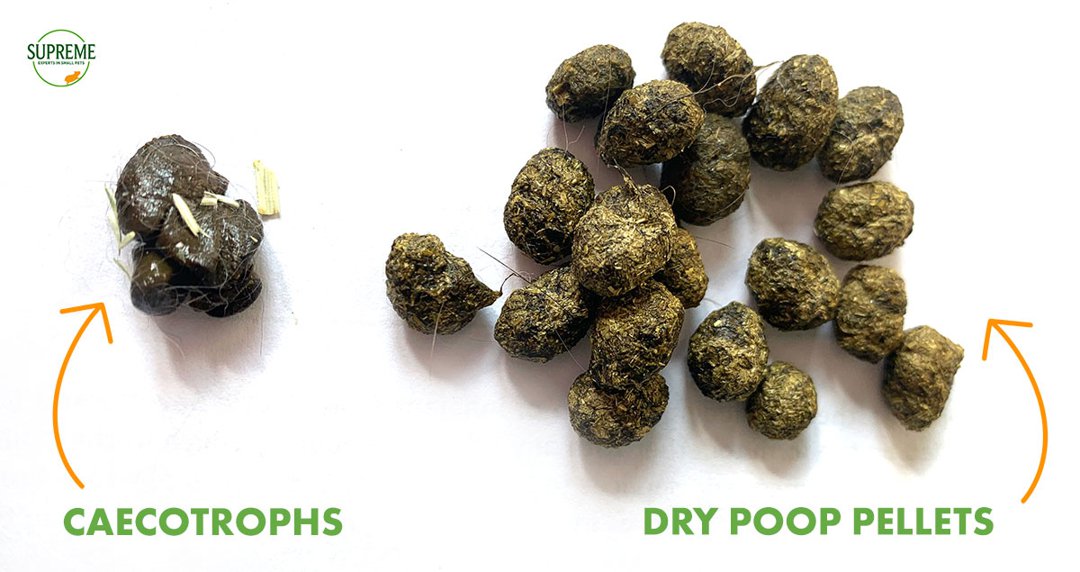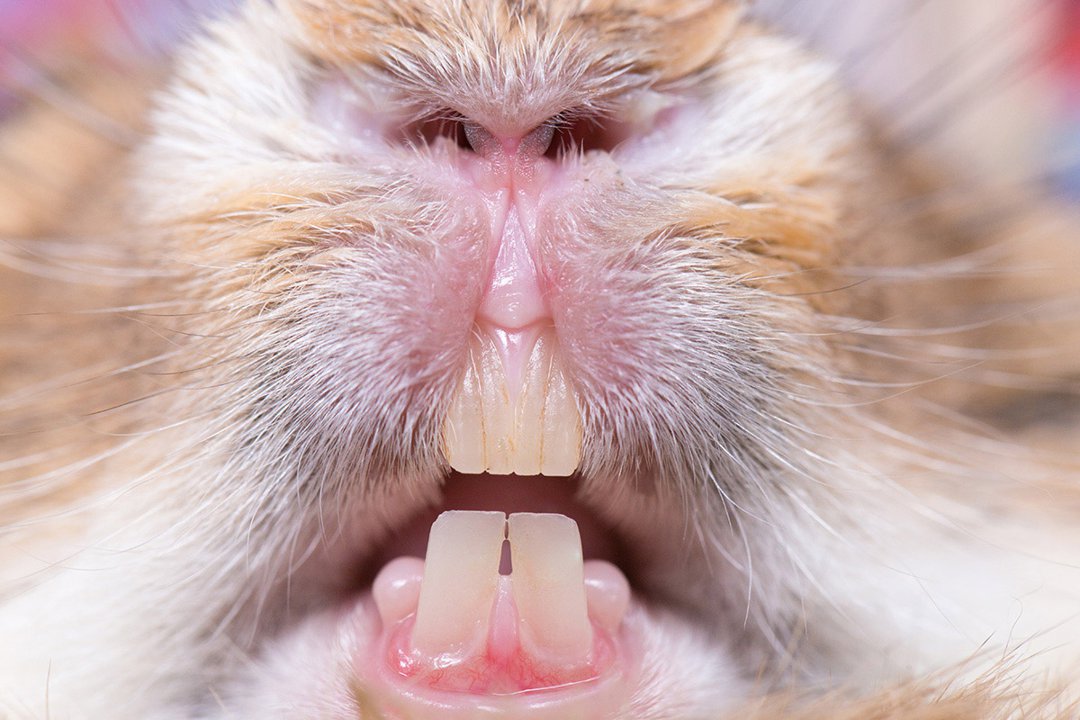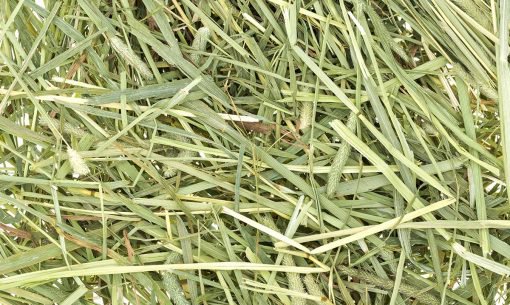The importance of fibre in rabbit and small herbivore diets
As their name implies, herbivores eat only vegetation. We would find a diet of fibrous plant material very tricky to digest, but herbivores have a very specialised digestive system. This specialised gut is also delicate though, which means that our pets need high-fibre nutrition that respects their natural diet in order to keep them in tip-top condition.
The importance of fibre
Fibre-rich diets are important for small herbivores, both to stop teeth from becoming overgrown and to promote digestive health. Let’s look at these two areas in a bit more detail:
1. Fibre for optimum digestive health
A healthy herbivore digestive system needs plenty of fibre to work efficiently. Without adequate fibre, the delicate gut will start to slow down and can even stop moving altogether – this is known as gut stasis and is a medical emergency.

Top tip: Reduced or no faecal pellets in your rabbit’s run? Call your vet without delay!
Long indigestible fibre stimulates the gut and keeps food moving through it. Shorter digestible fibre moves to a large organ called the caecum, where bacteria help to break down woody stems and fibrous vegetation. The caecum does a great job of breaking this fibre down, but it is not so good at absorbing nutrients, so small herbivores have developed a rather neat solution to get maximum nutritional benefit from their diet.
You may well have heard of caecotrophs. These are the nutrient-rich poos produced from the material in the caecum. Waste not want not is the motto here and what better solution than to eat these tasty morsels? After all, a second journey through the digestive tract is another opportunity for absorbing important nutrients. Maybe not our idea of a tempting snack, but these animals eat caecotrophs straight from their bottom. Head over to our blog 7 Things You Really Need to Know about Rabbit Poo! for more fab facts.
Such a highly specialised digestive system needs some TLC to keep it in perfect working order and a diet that is high in fibre and as close as possible to the natural diet is key.

2. Fibre for tip top teeth
To gain enough nutrients from their plant-based diet, wild herbivores have to eat for much of the day. Chewing on fibrous vegetation wears the teeth down so to compensate for this continual wear, the teeth of small herbivores are open rooted, meaning that they grow continuously.
Fun fact: rabbit teeth grow 2mm every week!
What does this mean for our small pets’ dental health? In simple terms, if they eat a diet that is lacking in fibre, there will be insufficient fibrous material to keep their teeth worn down and the end result is that teeth will become overgrown. Teeth that are too long will make it difficult to chew food effectively. Uneven wear may also cause sharp spikes to develop on the cheek teeth, causing painful sores and ulcers on tiny tongues and gums.
Feeding a good quality high fibre diet will decrease the risk of a rabbit, or other small rodent, developing dental disease.

Top 5 signs of dental disease
Prevention is better than cure but here are the signs you may see if your pet is developing dental problems:
- Wet chin caused by drooling
- Poor appetite
- Weight loss
- Poor coat condition due to lack of grooming
- Mucky bottom
If you have any concerns about your pet’s health, you should seek veterinary advice without delay.

The key to herbivore health: fibre, fibre, fibre…
Rabbits and other small herbivores can be quite choosy about their food so providing them with a tasty source of fibre is super important. Most of this fibre should come from hay or grass and they should eat a body-sized amount every day. High quality feeding hay, such as Science Selective Timothy Hay provides optimum nutrition and is a good choice to satisfy picky palates.
Small herbivores should also be offered a small portion of species-specific dry food. To support dental and digestive health and mirror the natural diet, this too should be high in fibre.
Top tips for increasing fibre intake
For small herbivores, always choose a pet food that is high in fibre and remember to check the crude fibre content on the packaging. Crude fibre is the statutory measurement of fibre on pet foods that is the true indicator of the fibre content in your pets’ food.
In addition, always offer an unlimited supply of delicious high quality feeding hay. Encouraging hay-eating is also a great opportunity for providing some environmental enrichment and keeping your pet busy. Why not try:
- Hanging hay in nets or racks to mimic foraging
- Hiding some herb leaves in the hay
- Popping some healthy treats such as Selective Naturals Orchard Loops amongst the hay for a tasty surprise
- Tucking hay into a cardboard tube to encourage foraging
To find out more about keeping your rabbits and small pets healthy or to make any product enquiries, get in touch with an expert here at Supreme Petfoods today. We’re more than happy to advise on the best food and healthcare tips for your furry friend!







